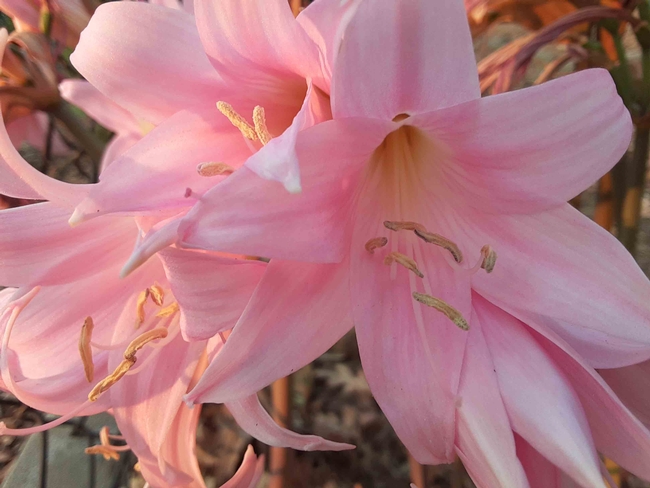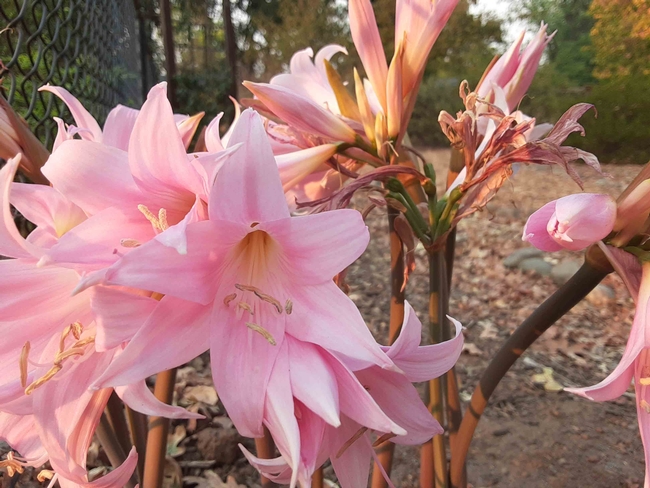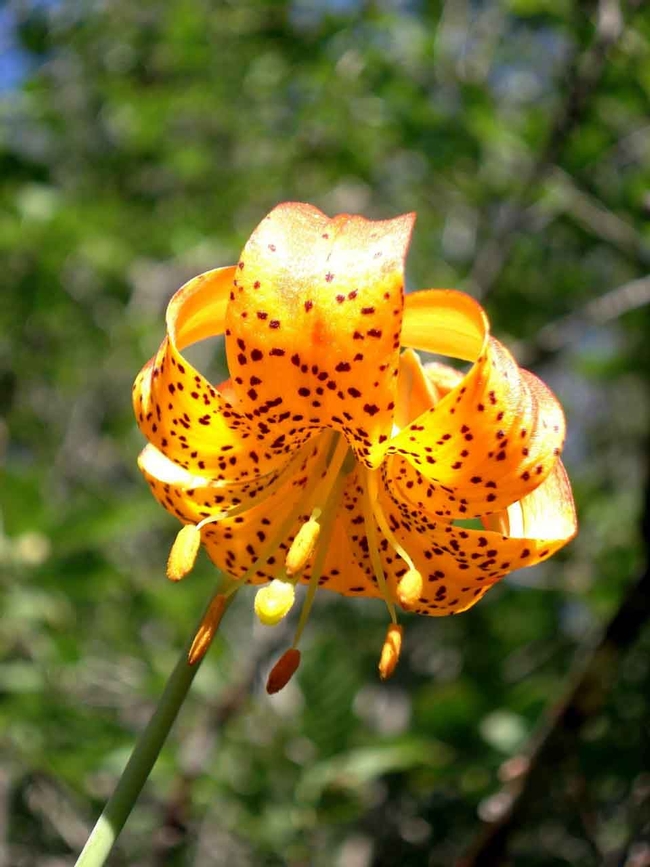Most bulbs, including most native plant bulbs, are planted in the fall, but February is an ideal time to plant several summer-blooming bulbs. Summer-blooming “bulbs” that benefit from February planting include Amaryllis, tuberous begonia, calla, Canna (canna lily), Calochortus (Mariposa lily), Crocosmia, dahlia, gladiolus, Liatris, lilies, Tigridia, and tuberose.
Amaryllis belladonna, Laura Lukes
Corms are shaped like bulbs, but are solid (not layered) inside. Crocosmia, gladiolus and Liatris grow from corms.
A tuber is actually a fleshy underground stem and its “eyes” are buds from which new plants can develop. A potato is the most familiar example of a tuber. Tuberous begonias grow from tubers (other begonias form rhizomes) and dahlias develop from tuber-like roots.
Rhizomes are actually underground stems. Cannas, callas and tuberose are summer-blooming plants that produce rhizomes.
Amaryllis belladonna, Laura Lukes
Mariposa lily, Brent McGhie
Leopard lily, Brent McGhie
UC Master Gardeners of Butte County are part of the University of California Cooperative Extension (UCCE) system. To learn more about us and our upcoming events, and for help with gardening in our area, visit our website. If you have a gardening question or problem, email the Hotline at mgbutte@ucanr.edu (preferred) or call (530) 538-7201.



